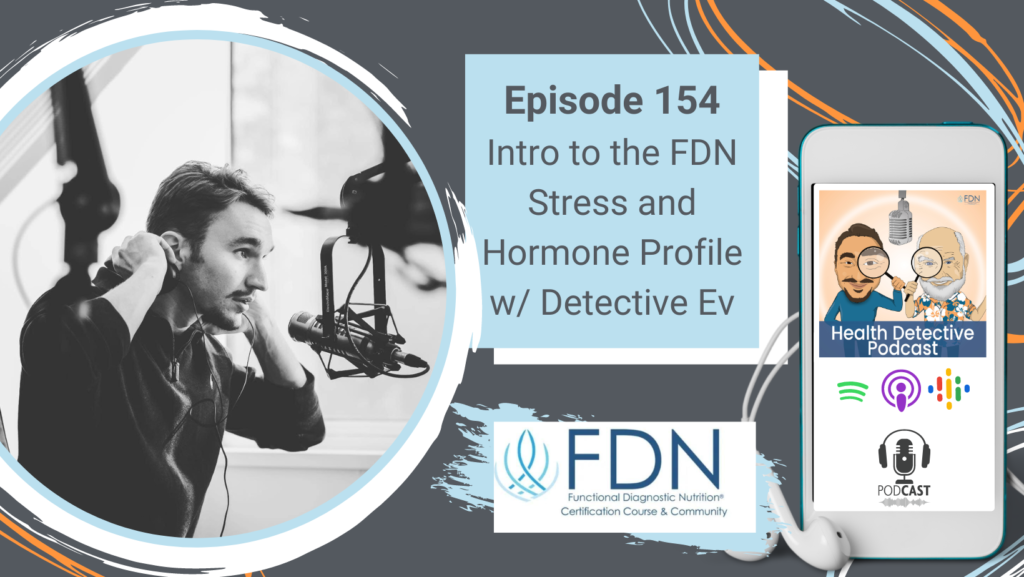Introduction
[00:00:00] Detective Ev: Hey guys, it is Detective Ev here popping in really quick before we even get started with the episode. If you are listening to this episode on the day that it came out, June 30th, 2022, you are in the final day before the course goes up a thousand dollars. We’ve been mentioning this all month. The reason it is going up a thousand dollars is to match the improvements to the course over the last two years, the additional mentorship, the extra labs that are included. The FDN program has really taken a whole revamp.
We have all of these wonderful things that we’ve offered all month long so that you could get involved or learn more about this before the price increase. So, if you are on a final push for this, go to fdntraining.com/call that’s fdntraining.com/call and book with one of our advisors.
If nothing happens to be available today, but you want to get in before that price increase, then check the call thing first, fdntraining.com/call, but then you might want to go to the main website and actually dial the number. There’s usually someone on staff that will pick up your call, even if you were not on the schedule. So, get in that way.

There’s a 30-day money back guarantee for the course. Even if you’re slightly interested in this, I don’t know why you wouldn’t at least get your spot reserved so that you can just get money back if you find that it’s not for you.
All right, without further ado, let’s get to the podcast.
FDN Gives Graduates Access to Over 60 Tests
Welcome to the Health Detective Podcast by Functional Diagnostic Nutrition. If you’re interested in natural healing and or functional medicine, congrats, you are in the right place. You can always visit us at functionaldiagnosticnutrition.com.
My name is Evan Transue, AKA Detective Ev. I will be your host for today’s show. This will be a relatively short and sweet episode. We’re continuing our series where I break down the lab tests. I talk about the main labs that we use and teach in the FDN course.
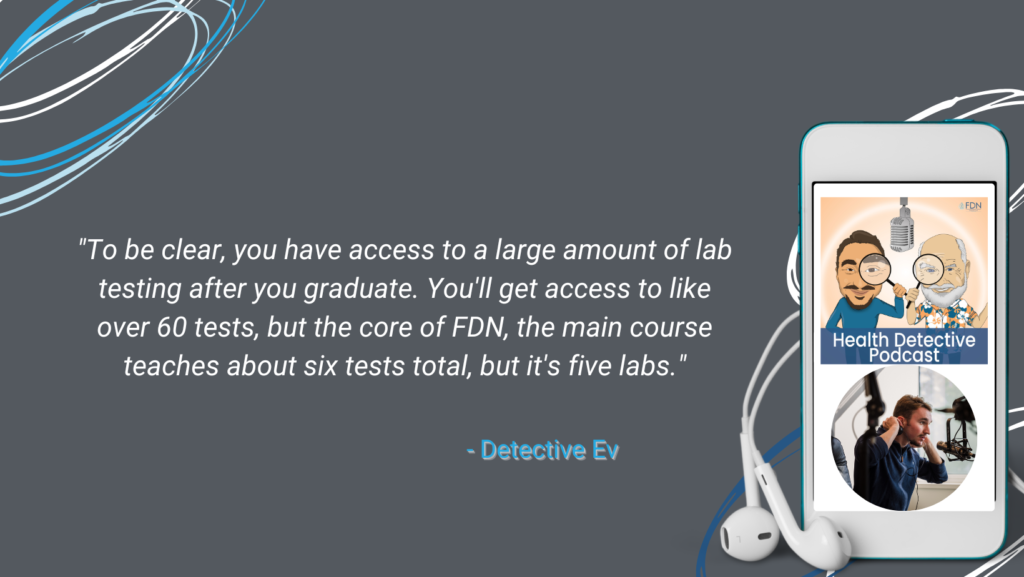
Now, in case it’s your first time listening. To be clear, you have access to a large amount of lab testing after you graduate. You’ll get access to like over 60 tests, but the core of FDN, the main course teaches about six tests total, but it’s five labs. That’ll make more sense in a different episode.
A Main Problems Core System
The reason we’re focused on that core stuff, Reed Davis explains this so brilliantly, he talks about how he was running these labs with clients. He ran over 10,000 labs, believe it or not, personally, not through FDN, just personally he ran that.
What he was learning is there’s a bunch of fancy labs out there. There’s things that offer great insight and you could run 500 different labs on a sick person, and you could probably find something wrong on each of them. But then you have to start asking the question eventually, okay, well, how does the information on this particular lab test change how I’m going to approach this client?
Let’s say you are a supplement person and you’re gonna give a supplement based on something that’s wrong in the test. Are you gonna give 500 supplements? Are you gonna recommend 500 different lifestyle changes? Probably not. This is a classic case of a law of diminishing returns. You know, it’s great to have lab testing, no one’s denying that. You see us wearing the shirts all the time in our videos that say, “test don’t guess.” And if you’ve seen us at conferences, you know we’re all wearing that. But there’s a point where this isn’t useful anymore.
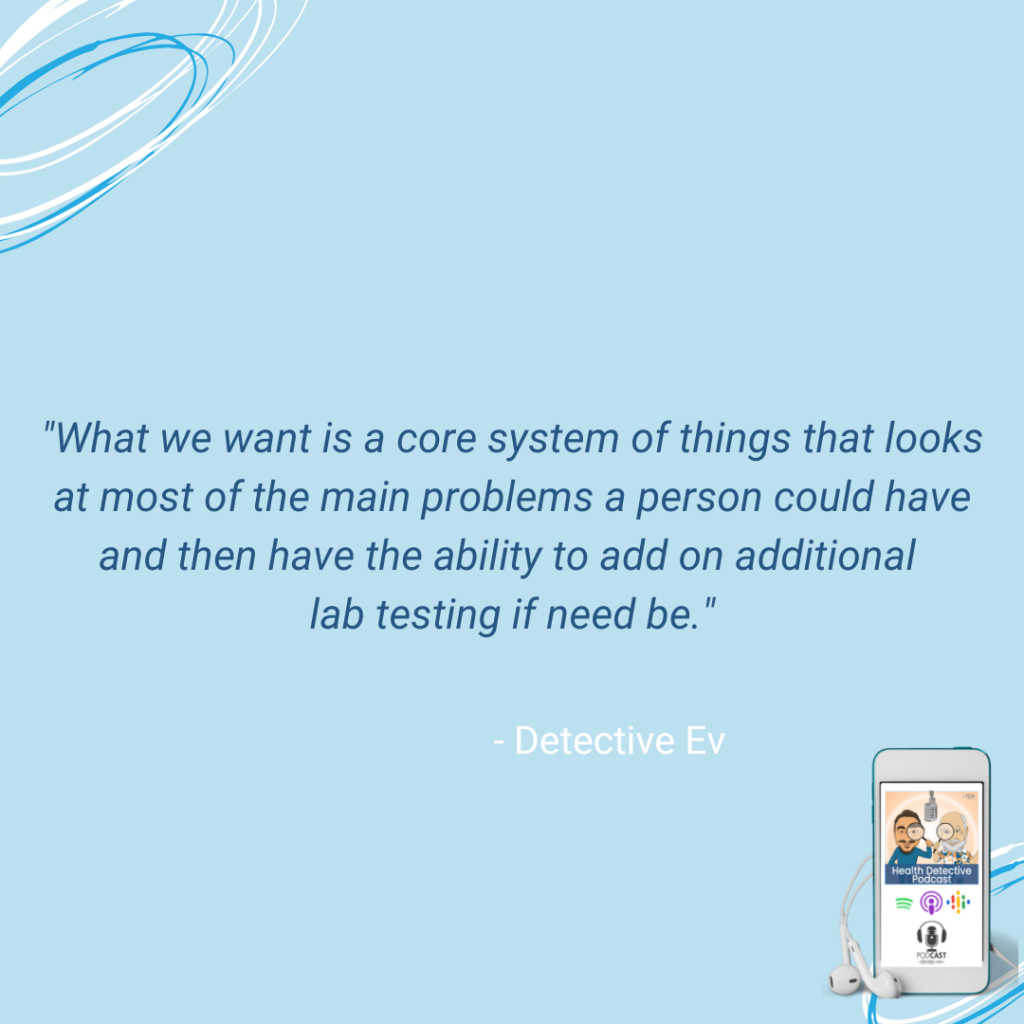
It’s not one of those things where one test is great, so a thousand must be awesome. Even if the person had all the money in the world, I would never, ever, ever start with a thousand tests. It doesn’t make sense. It’s not actually helping the person. What we want is a core system of things that looks at most of the main problems a person could have and then have the ability to add on additional lab testing if need be.
Most of the Core Labs Are Included in the Tuition
What you will find in your practice, if you end up becoming an FDN and starting this, or maybe you’re a trainee right now, already going through the course, 80% of the time, you don’t need any extra labs. You’ll be totally fine with this stuff. But for the 20% that got a lot better, but maybe need a little refinement or have a specific case, you know something’s going on or something weird’s happening in their life, where they could use additional support from a specific test. Okay, great. You still have access to those things as an FDN and you can utilize them and course correct if need be.
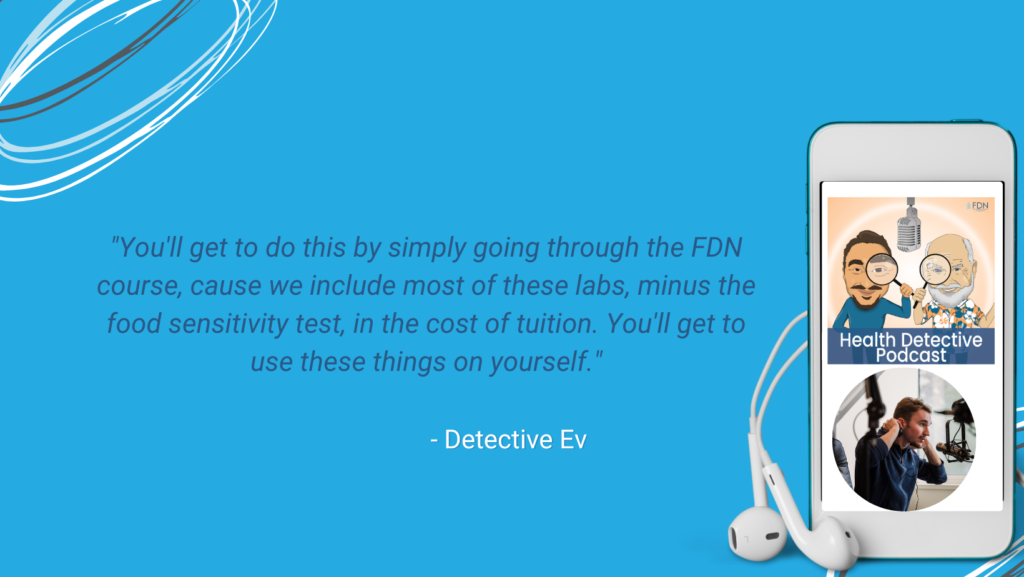
But I promise you, as someone who’s been doing this for five years (and we have people here that have been doing this way longer than me), trust the process, trust the system, work with this first. You’ll get to do this by simply going through the FDN course, cause we include most of these labs, minus the food sensitivity test, in the cost of tuition. You’ll get to use these things on yourself. You’ll get to go over your results with a mentor.
Why don’t you see how much better you get while you do the course and then see if you wanna reinvent the wheel afterwards. I digress. Let’s talk about the hormone test, that’s the one we are discussing today. This is by a company called Fluids IQ. It’s their stress and hormone profile. It’s actually customized for FDN.
Stress and Hormone Profile – Collect Salivary Samples
They’re a wonderful company. I hope I get to have Dr. Gonshor (he’s the gentleman that runs this whole thing), I would love to have him on one day, just so you guys can hear how his brain operates and how dedicated he is to what we do at FDN. He’s very for a functional and holistic approach. And when FDN met Fluids IQ, it was this beautiful partnership. Now we have multiple different profiles and labs that we use through them. Really cool. Multiple different tests, I should say. It’s a better way to word it considering we’re using the word “labs” a lot in these solo episodes.
So, the Fluids IQ stress and hormone profile is gonna look at a few different things.I am not here to break down all of it. There are hours and hours and hours of training that you’ll get to hear about this with, in the FDN course. So, I’m gonna break down some of the main stuff.
I think something you’d probably like to know is why do we use a hormone test to begin with? Well, it goes back to that same concept of Reed having figured out if we look at a specific set of labs, you probably can get people better about 80% of the time, like to exactly where they want to go. The other 20% still felt a lot better, maybe they just need some course correction. So that’s great.
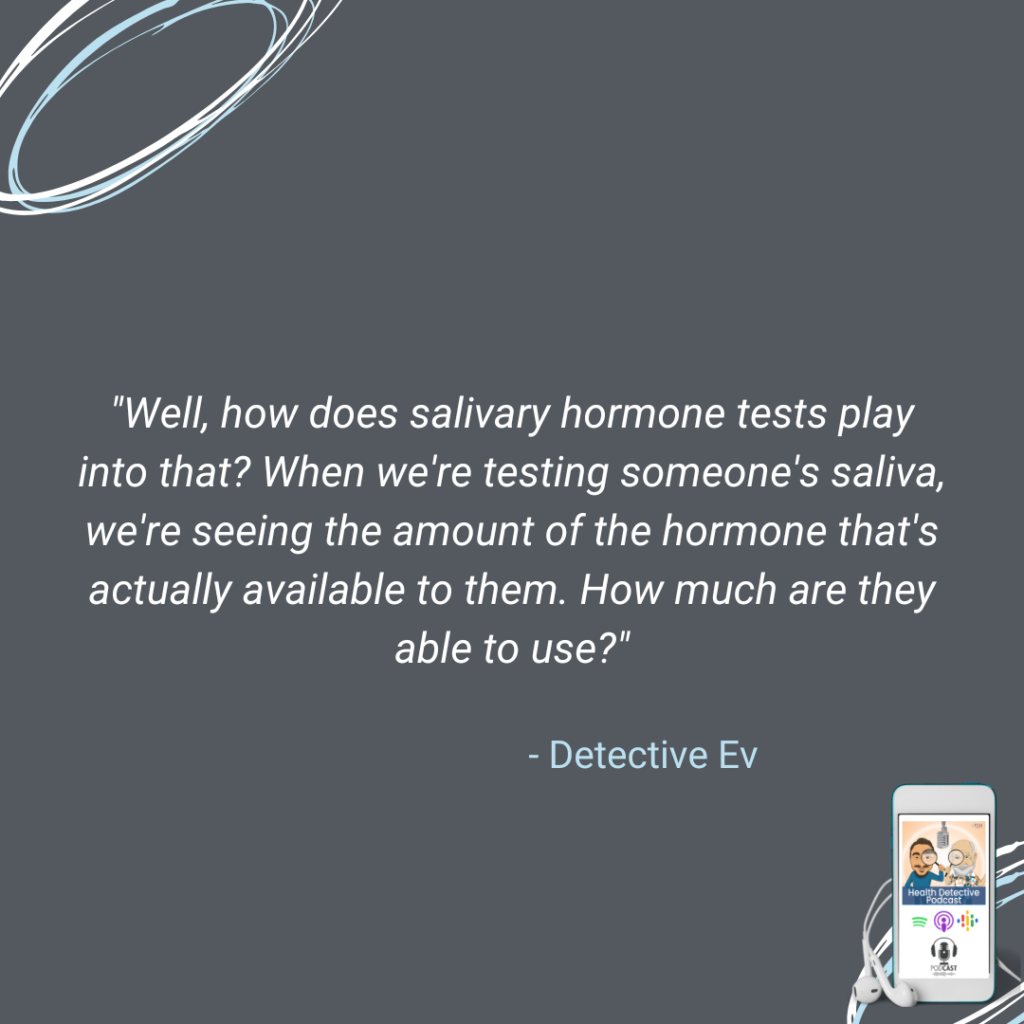
Well, how does salivary hormone tests play into that? When we’re testing someone’s saliva, we’re seeing the amount of the hormone that’s actually available to them. How much are they able to use? And that’s a lot different than how much they might have on a blood test.
Correlate Test Results with How a Client Feels
We’re looking at things like estradiol, progesterone, a progesterone to estradiol ratio, which we explain way more about in the course. If any of this is confusing or you haven’t even heard of some of this stuff, don’t worry, there’s extensive training on all of it. Melatonin, secretory IgA, DHEA, cortisol, and we do four markers for this. I’ll explain that in a moment on here. A cortisol to DHEA ratio, testosterone, and there’s a few other things on there as well.
We’re breaking down a lot of different stuff and you could categorize these to some degree. When we have the sex hormones on there, like the testosterones and the progesterones and the estradiols, that’s something we need to look at. Because at FDN, we’re really, really big on clinical correlation.
Clinical correlation is not diagnosing and it’s certainly not treating anything specifically. We are not doctors. Some FDNs happen to be doctors, but I’m not a doctor, plenty of FDNs aren’t doctors. And some of us have no background in this whatsoever.
That’s okay. The course is designed so that if someone has the will and the motivation, they can 100% get through it. Even if they’ve been an accountant their whole life, and never had to study much health stuff at all, you could still do this.
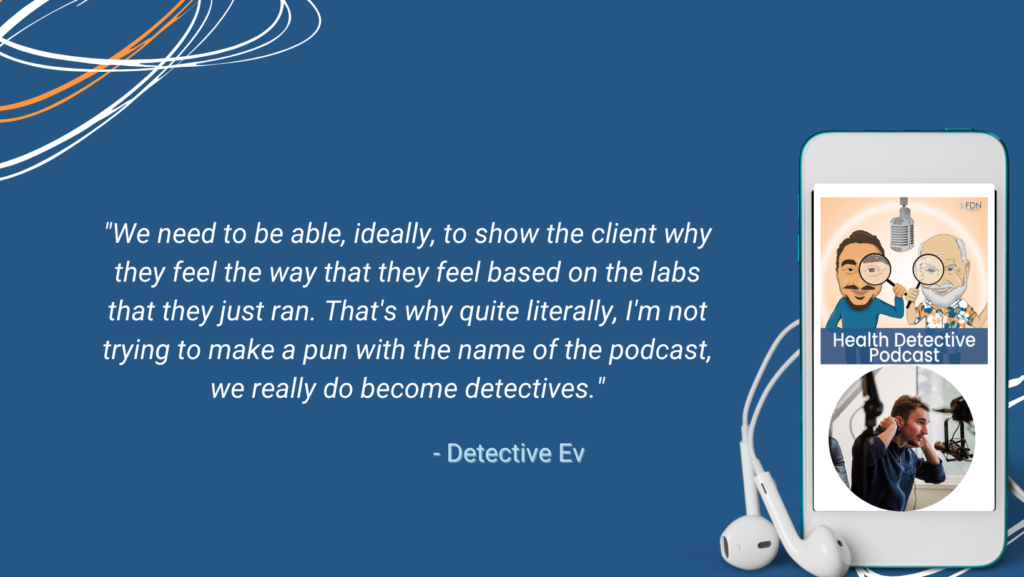
But clinical correlation, we’ve mentioned on the show before, but it’s always a concept worth revisiting. We need to be able, ideally, to show the client why they feel the way that they feel based on the labs that they just ran. That’s why quite literally, I’m not trying to make a pun with the name of the podcast, we really do become detectives. There’s a couple ways to use lab testing. Well, there’s a few ways, I guess.
Testing Based on Symptoms Yields Very Limited Results
The first way is not using it at all. You’re just guessing based on symptoms. That, I don’t think I need to convince anyone that would listen to a podcast like this, that that’s something that doesn’t work and has probably failed you and failed many people you know. We can dismiss that right away.
The second option is testing based on symptoms, and this is not what we wanna fall into. It sounds counterintuitive. You say, well, wait a second. Why would I not figure out what something sounds like and then use the most probable test for that? It’s because the body is complicated.
Let’s take thyroid for example. And if you don’t believe this from FDN, you don’t have to. There are literal MD, OB-GYN, various doctors on here who have come on and said the exact same thing. Dr. Kyrin Dunston was one of them. You can check out her episode. She talked about how she thought she had a thyroid problem when she was still in just the world of Western medicine.
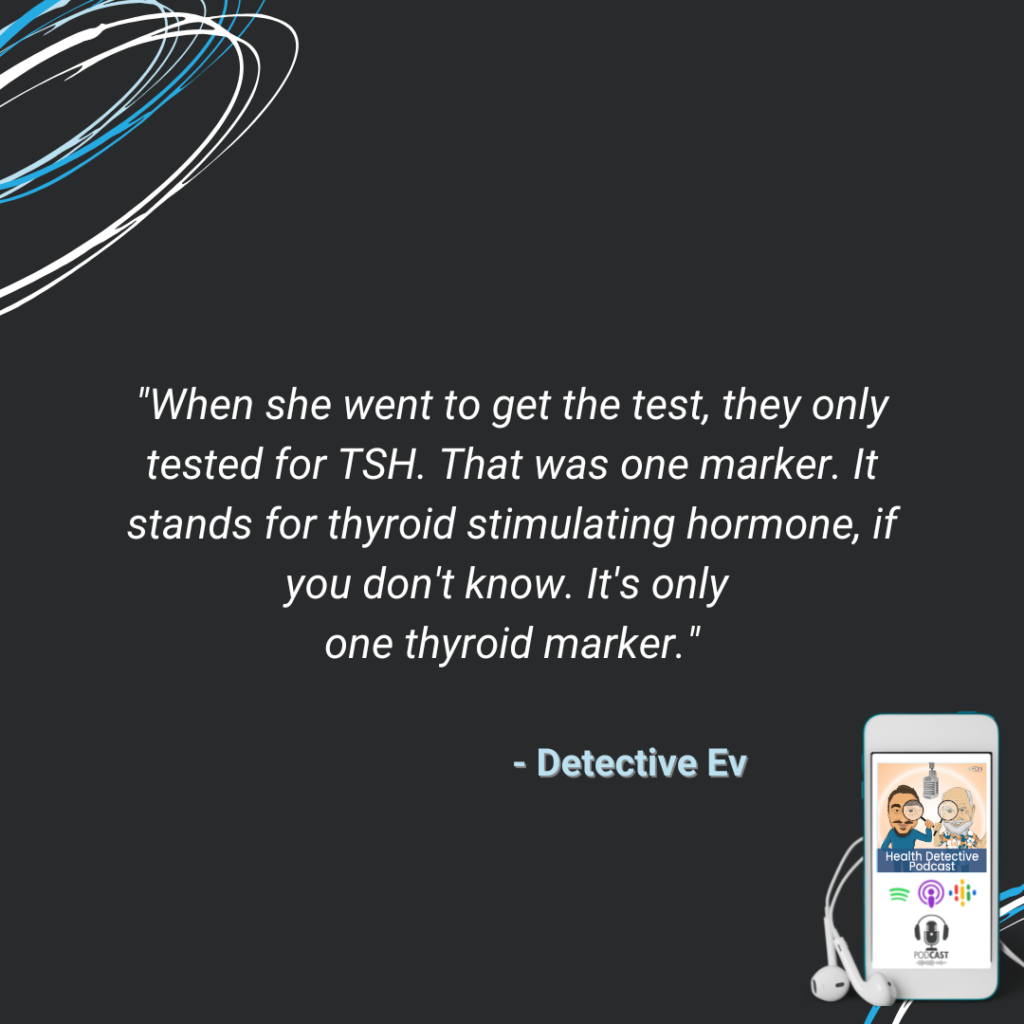
Now, she was correct, there was a problem with her thyroid. She wasn’t wrong, but there was a couple issues with that line of thinking though, just thinking it’s that. When she went to get the test, they only tested for TSH. That was one marker. It stands for thyroid stimulating hormone, if you don’t know. It’s only one thyroid marker. And a lot of the times, if you know anything about this (I’m using a relatively basic example in our world), you know that TSH might not be as affected as some of the other markers. It often is, but not as dramatically as some of the other markers.
Treating the Paperwork is Not Fully Effective
Because of this, many people with thyroid conditions, whether it’s hyper or hypothyroid or Hashimoto’s or graves’ disease, they don’t get diagnosed properly because the antibodies might not have been looked at at all and the other markers were completely ignored.
So she went, got this thyroid test. It didn’t look like anything was wrong and, so, okay. Sorry. We tested for what it sounded like. Maybe you’re just stressed out. Maybe you’d need to take some time off. Well, that’s not very helpful.
Now, let’s say, this is kind of like if there’s a second way to use the lab testing, there’s like an A and B version of that. It’s not quite a completely different thing altogether, but it’s an A and B version of this. So, let’s say that TSH level did come back out of the reference range, whether too low or too high.
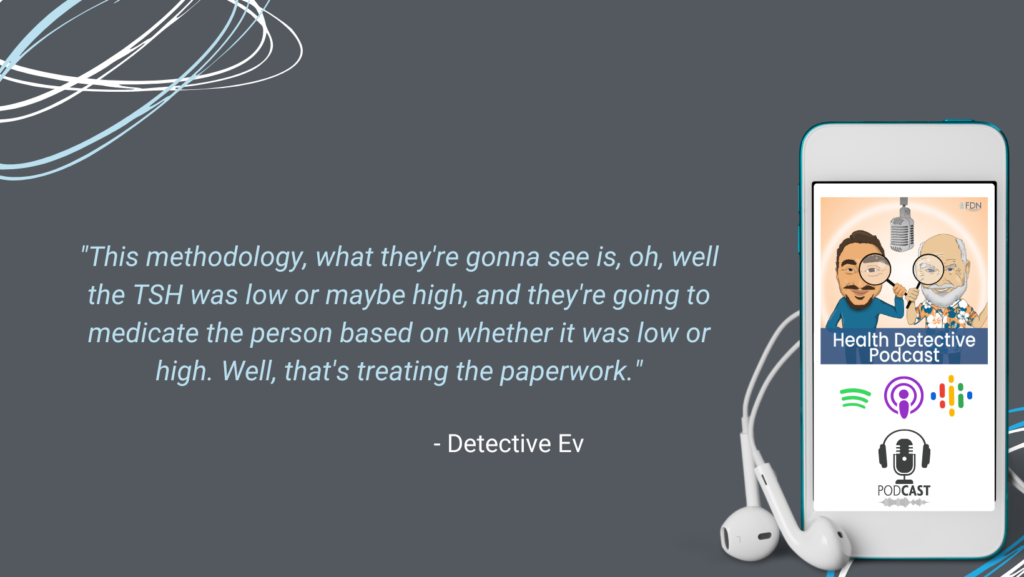
Well, Western medicine, and guys, we’re not condemning Western medicine. Again, there’s doctors on this podcast that come on and say the same thing. I’m just not approving of Western medicine for these specific conditions. That’s all we’re talking about. This methodology, what they’re gonna see is, oh, well the TSH was low or maybe high, and they’re going to medicate the person based on whether it was low or high. Well, that’s treating the paperwork.
That’s saying, oh, we found something on the labs. That’s great. And remember if they don’t find something on the labs, then you’re stressed out and need to take some time off. But if they did find something on the labs, they’re going to treat the paperwork, assuming it is out of the reference range and can meet some type of diagnostic code.
Look at Other Stress and Hormone Markers to Get a Complete Picture
Well, that might make you feel better. That’s the best-case scenario. Worst case is you don’t feel better at all, and you actually get side effects. But usually, most people are somewhere in the middle. That’s, they feel a little bit better, but they still have the same core, fundamental problems that they had before. It wasn’t just a thyroid problem. It is so rare that the thyroid is the primary issue.
The thyroid, continuing this example, is part of a whole system, multiple systems. There is the hypothalamic, pituitary, thyroid axis, which we learn about in the course by the way. Listen, you don’t have to know anything about this to understand what I’m saying.
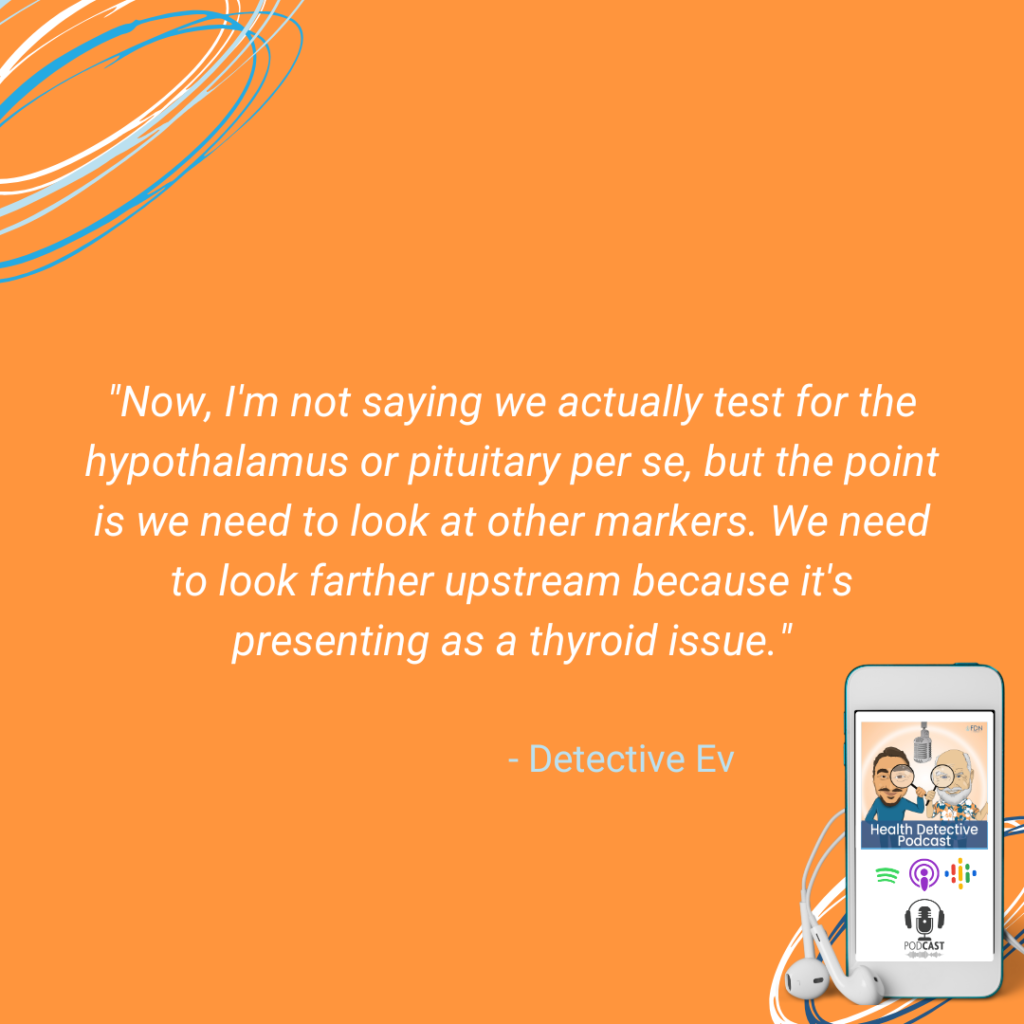
HPT axis, hypothalamic, pituitary, thyroid axis. Well, did we test anything with the hypothalamus or pituitary? Did we just look at thyroid? Now, I’m not saying we actually test for the hypothalamus or pituitary per se, but the point is we need to look at other markers. We need to look farther upstream because it’s presenting as a thyroid issue.
And it might quite literally be that there are issues with the thyroid. But it doesn’t mean that that’s the core problem. Either you’re gonna get dismissed completely because your thyroid marker, the one singular thing that they looked at, wasn’t out of range, when there’s a bunch of thyroid markers that we need to look at. Or maybe you were one of the quote/unquote “lucky” people who actually had it out of range and you’re gonna get treated for that with a medication.
If that doesn’t work, eventually you’re gonna get a surgery. It’s exactly what happened to my mom.
No One Ever Asked About the Basic Stuff
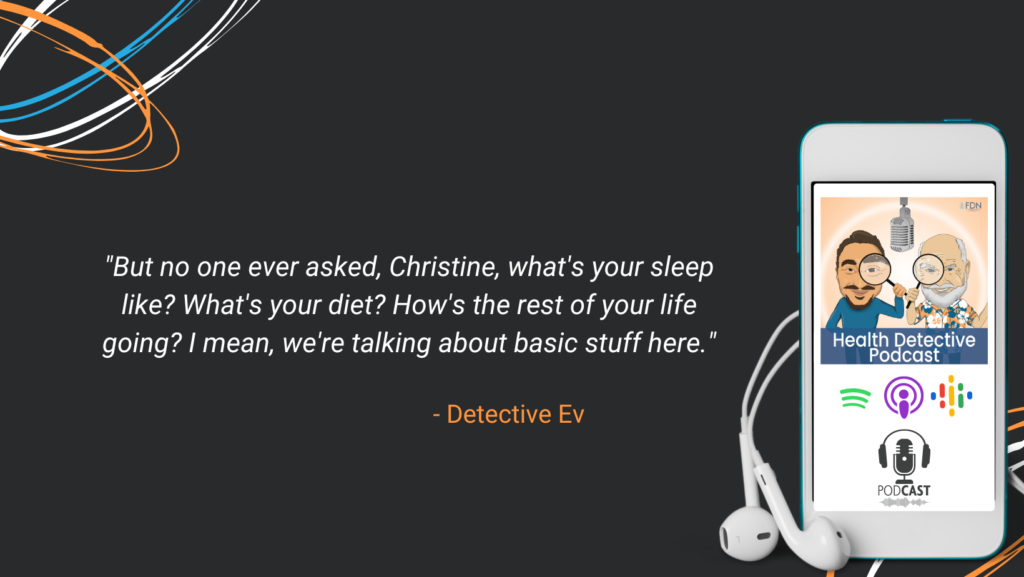
I’m not speaking theoretically here. This is exactly what happens. The Synthroid didn’t work well enough over time, so they said, okay, well we gotta take out your thyroid. Unfortunately, I didn’t know anything about this stuff at the time, so my mom did get a full thyroidectomy. But no one ever asked, Christine, what’s your sleep like? What’s your diet? How’s the rest of your life going? I mean, we’re talking about basic stuff here.
We’re not even talking about all the other labs that we look at. Okay. So, I don’t wanna go too far off on that. Maybe I already have. I’m just giving a real example of why we’re looking at these types of markers and what clinical correlation actually is. We’re not diagnosing.
Diagnosing would be seeing that thyroid marker that’s high or low, saying, hi, Mr. and Mrs. So-and-so. You have hypo or hyperthyroidism. Here’s your medication. Come back in a little bit and let’s see how you’re doing. That’s treating the paperwork. Clinical correlation is seeing someone, let’s take myself for an example.
Okay, Ev, at the time of starting FDN, you’ve had severe acne in the past. It’s got a little better, but it’s still definitely present. You have fatigue. Energy’s all over the place. You crash in the late afternoon. You don’t feel good. You’re moody. You’re irritable. You’re angry. I kind of just said the same thing like three different times. I’m feeling depressed. I’m feeling anxious. Let’s figure out if there’s not any markers on any of these tests that correlate with what you’re talking about.
Clinical Correlation Example with the Stress and Hormone Panel
Here’s the difference. Rather than look for something to diagnose, we’re not diagnosing the anxiety or depression. That’s already been diagnosed by a doctor. What we are doing instead, let’s use this hormone test, my progesterone was four times higher than the upper end limit of the reference range for a male. That’s a female hormone, primarily. That’s an oversimplification. I’m not that ignorant. But generally speaking, that would be something that females want more of. Okay. Well, that’s probably not gonna make me feel too good.
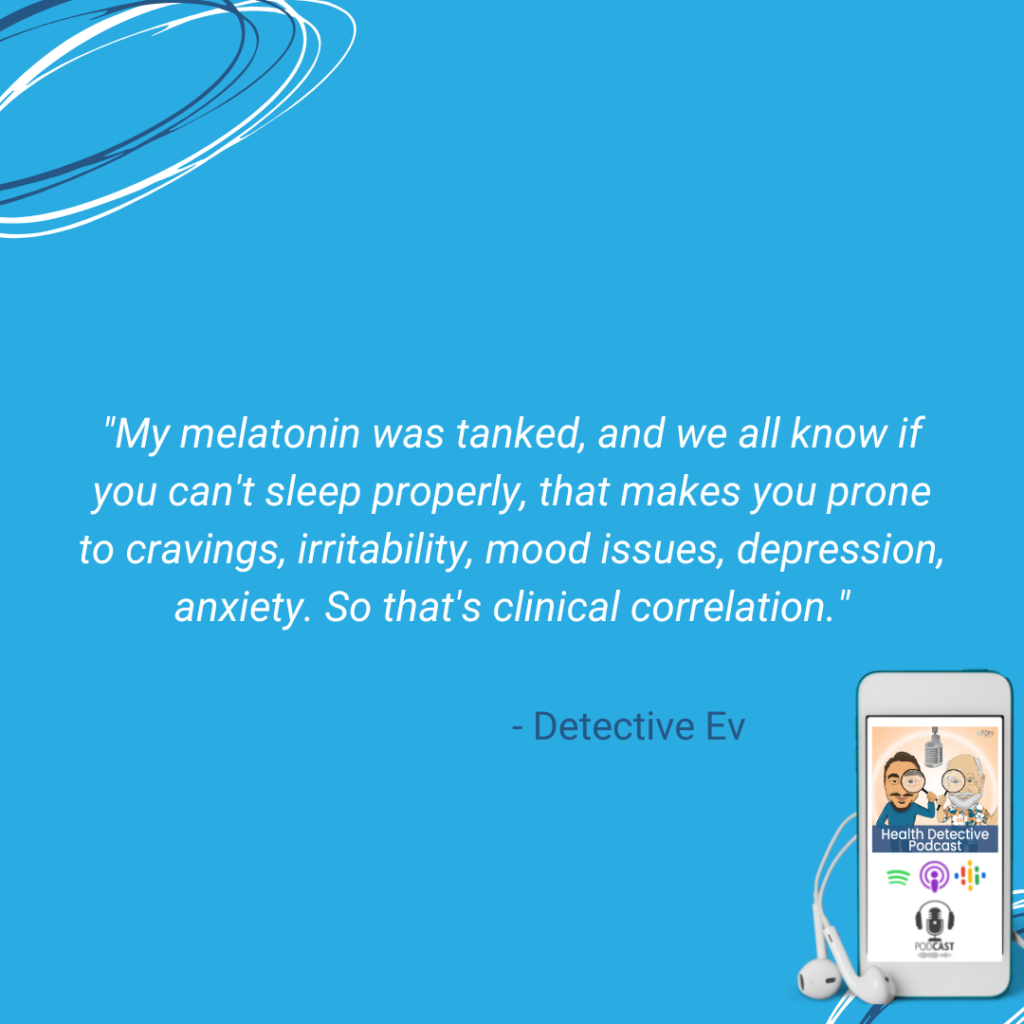
My melatonin was tanked, and we all know if you can’t sleep properly, that makes you prone to cravings, irritability, mood issues, depression, anxiety. So that’s clinical correlation. It’s not saying, Hey Ev or Hey client, your melatonin’s low, so you have generalized anxiety disorder. That’s not accurate anyway, and that’s also diagnosing.
What it is saying is hi, Mr. and Mrs. So-and-so, you came in presenting with these symptoms. Here’s the set of labs that we ran. And on this particular one, using the hormone test, your melatonin’s low. Just so you know, when someone’s melatonin’s low, that’s something that definitely could lead to bad sleep. Bad sleep could absolutely lead to these mood changes that you’re having and certainly worsening of acne.
I am saying the most simple, basic way of breaking this down that you possibly could. But if you understand that concept, then you’re ready for the rest of the stuff in the FDN course. Cause we can get a lot more advanced with this.
Stress and Hormone Panel – You’re Gonna Feel a Hormone Imbalance
We can start breaking down cortisol to DHEA ratios and how that could be the reason that you feel X, Y, Z way at this time of the day, or you’re not able to recover from the gym. Or hey, your secretory IgA is messed up. This is why you catch a cold every three months. While there’s a lot more complicated things and interesting things that we can get into other than the example that I listed, that’s the difference between clinical correlation and diagnosing.
We’re not telling anyone that they have anything. We’re seeing what they have, they’re telling us. Then we’re showing them what actually correlates with that and why they might feel the way that they feel. So, this is why the salivary hormone test and figuring out what actually is available hormonally in their body is super important. There is probably no test that we run that has more consistent clinical correlation than the hormone test. Because our hormones make us, man.
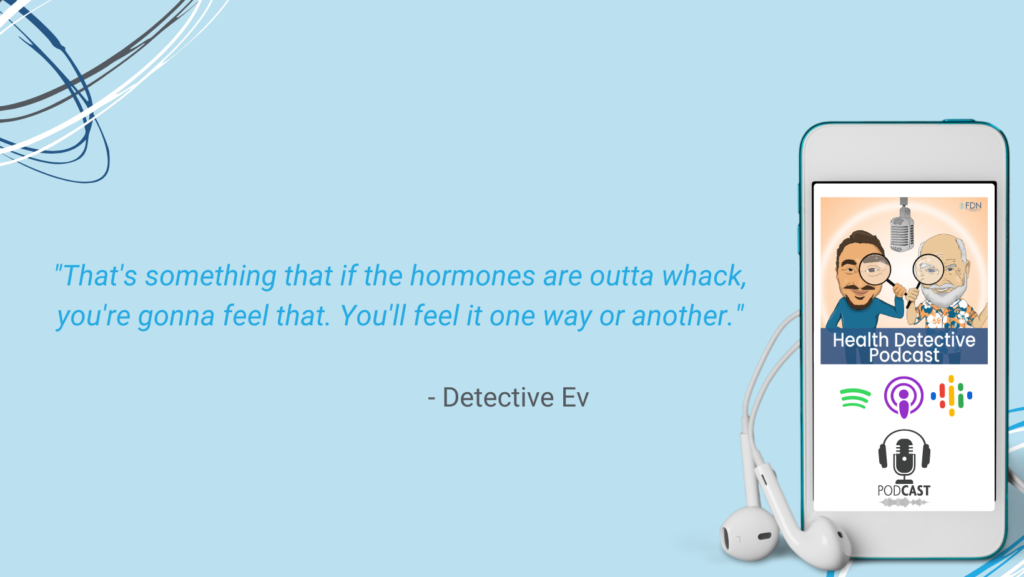
That’s something that if the hormones are outta whack, you’re gonna feel that. You’ll feel it one way or another. That’s hopefully a good overview. Again, I’m not here to break down every single marker, but it kind of helps out. The other thing I wanted to talk about today too, because this is really important to me. I wanna talk about the cortisol diurnal pattern.
What does that mean? Well, let’s talk about it. Remember I said that we’re having them take their saliva four different times. Now, why did we do that? Well, it’s because cortisol is a very, very correlatable marker in terms of the person’s overall health and their hormonal output. It’s very useful when we’re talking about the hormone stuff.
Stress and Hormone Panel – Cortisol Should Follow a Predictable Pattern
I can’t wait if you’re knowing that you’re gonna do the course anyway, to really get the full picture of this. Because this is such a short overview today, when you get literally tens of hours of training on this, and it’s really fun. It’s challenging, but it’s very fun. Anyway, I want to make sure we touch on this before we get off today. The four cortisol markers, we’re looking at morning, noon, afternoon, and night.
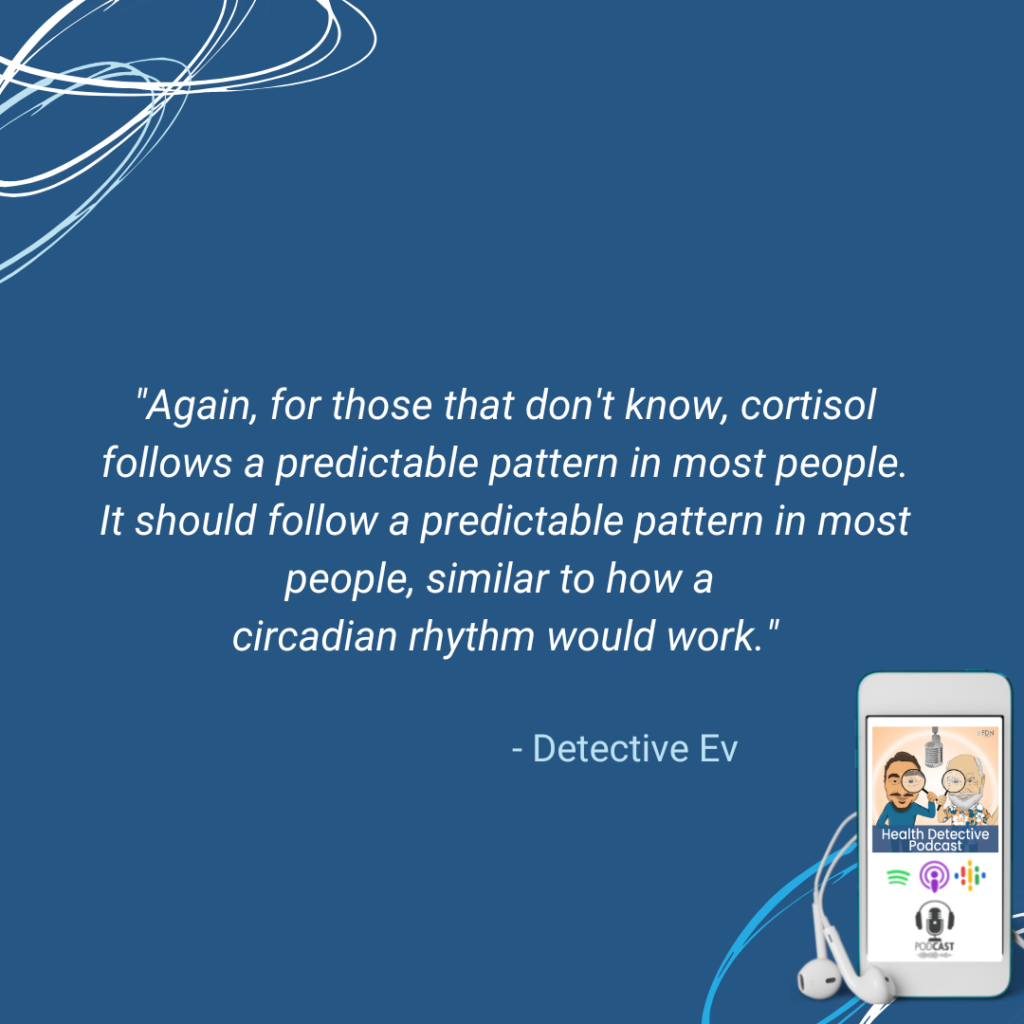
Again, for those that don’t know, cortisol follows a predictable pattern in most people. It should follow a predictable pattern in most people, similar to how a circadian rhythm would work. So, if you’re looking at a graph of this, you can probably find this pretty easily on Google if you just look up like cortisol, diurnal pattern or cortisol, diurnal rhythm.
You’ll see that cortisol should be, relatively speaking, to the other markers, significantly higher in the morning. Cortisol spikes in the morning. It’s one of the things that helps us get up and going. It gets us up and gets us going. It suppresses melatonin because we don’t want melatonin first thing in the morning. We want to be awake and be good to go.
Then it will dip down to noon very dramatically. The most dramatic dip is gonna be from morning to noon. Then you’ll see progressively lower amounts all the way up until night, which of course would be the time that ideally your melatonin is spiking up so that you can get proper sleep.
We don’t want cortisol high, that prevents sleep. It makes us wake up. We want the melatonin high. That’s the tradeoff.
Stress and Hormone Panel – Four Necessary Cortisol Makers
It would look very similar if we went the same way with melatonin and did four markers on that, we would see a similar pattern, just the opposite of it.
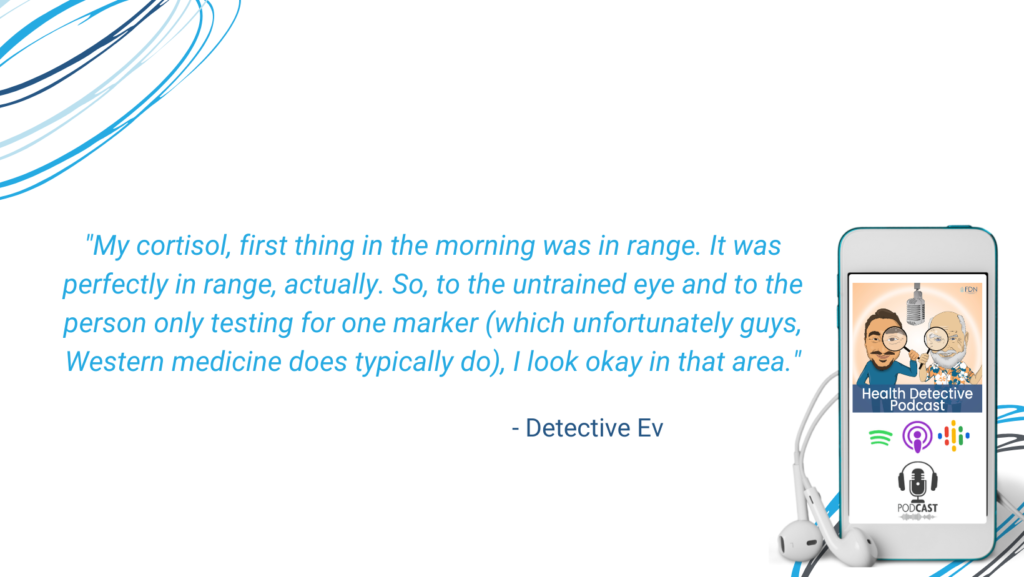
Now, why did we do these four markers here? Well, here’s the thing. When you only look at one marker for cortisol, it can be very misleading. I, for example, when I had this test first done, got my cortisol reading and it was first thing in the morning. And guess what? My cortisol, first thing in the morning was in range. It was perfectly in range, actually. So, to the untrained eye and to the person only testing for one marker (which unfortunately guys, Western medicine does typically do), I look okay in that area.
Now, when you start tracking the rest of the day, though, there was a different picture for the Evan Transue story. You saw a dramatic decline in my cortisol levels by the time noon was there, like plummeted. Afternoon and night were legitimately out of range. This is the other thing too, that we learn about. Reference ranges are great, but there’s also relative elevations and relative decreases. What does that mean?
It means that if my cortisol, in this case, was at a certain level in the morning, it should be at a certain place in the noon time, that’s predictable. Then it should be at a certain place at afternoon that’s also predictable, and the nighttime that’s predictable. When we look at this, you would normally see a graph or a line graph of a thing that’s trending down.
Stress and Hormone Panel – Relative Elevations & Relative Decreases
If I saw someone that had, let’s take my example, a normal morning cortisol level plummets at noon, but is within the reference range. It’s within the reference range, it just plummeted. But then the afternoon marker is even higher, but it’s within the reference range. Again, to an untrained eye, they might say, well, everything’s in the reference range. It’s all good.
That’s what we would call though, a relative elevation. Just to be clear for those that aren’t as good with the auditory stuff and are more visual learners, what you’d be looking at here is a line graph that should be one dot on the far left of the graph, kind of in the middle section of the graph, then it drops, then it drops again, and then it drops again. And those last two drops are less dramatic than the first drop. That’s how it should be.
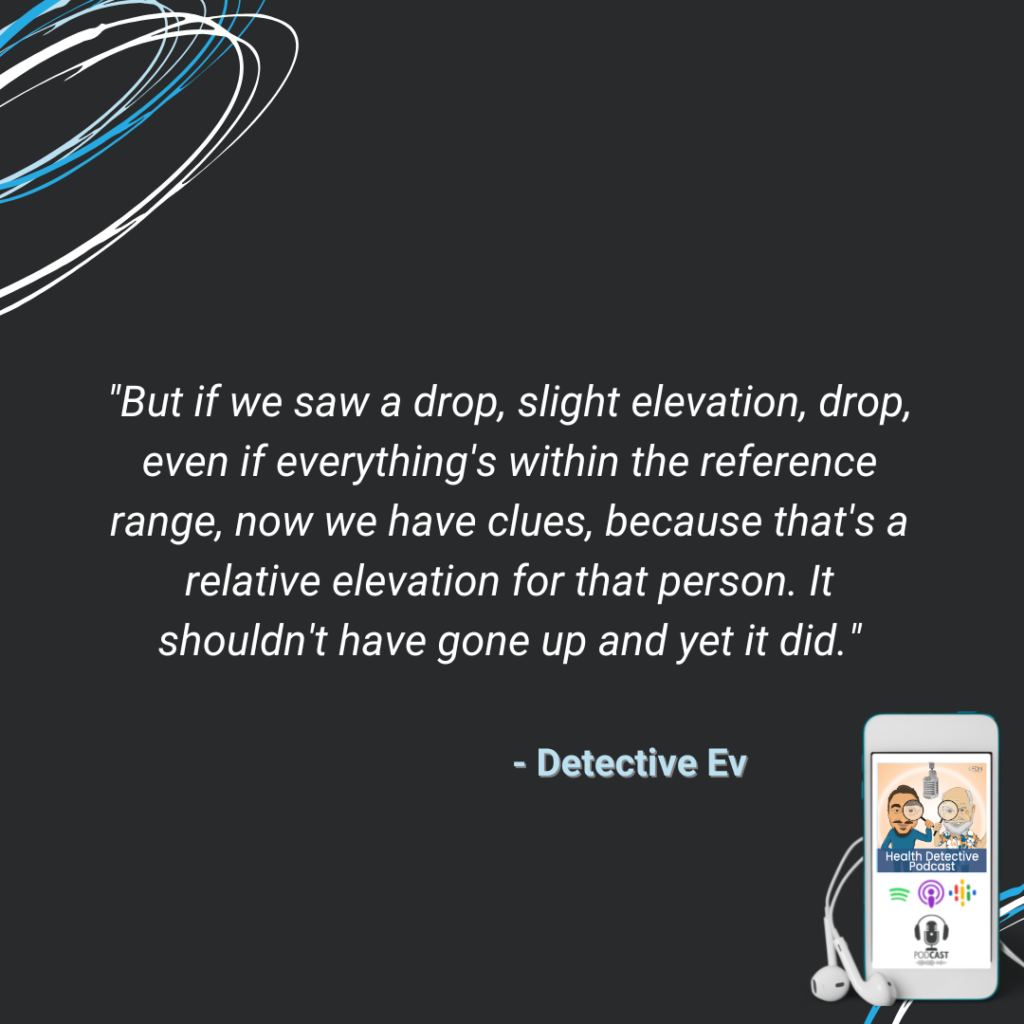
But if we saw a drop, slight elevation, drop, even if everything’s within the reference range, now we have clues, because that’s a relative elevation for that person. It shouldn’t have gone up and yet it did. So, it’s irrelevant that it’s within the reference range.
Something spiked their cortisol in that afternoon, and we need to figure out what. We could spend hours on this, but some of the examples of this might be a food sensitivity that they don’t know about. Maybe they ate a bad thing for lunch that looked healthy to them, but it actually spiked their cortisol.
Stress and Hormone Panel – Rule out Reasons for The Relative Elevations/Decreases
Perhaps they had a fight with a family member. Maybe they got some mail and they’re terrible at paying all their easy pass tickets like I am. And you’re like, oh my God, I forgot about that one. I need to pay it. Just a hypothetical, of course, I don’t think I’m actually like that. So, their cortisol spiked a little bit because they’re stressed about a bill that came in or whatever it might be. That’s relative elevation.
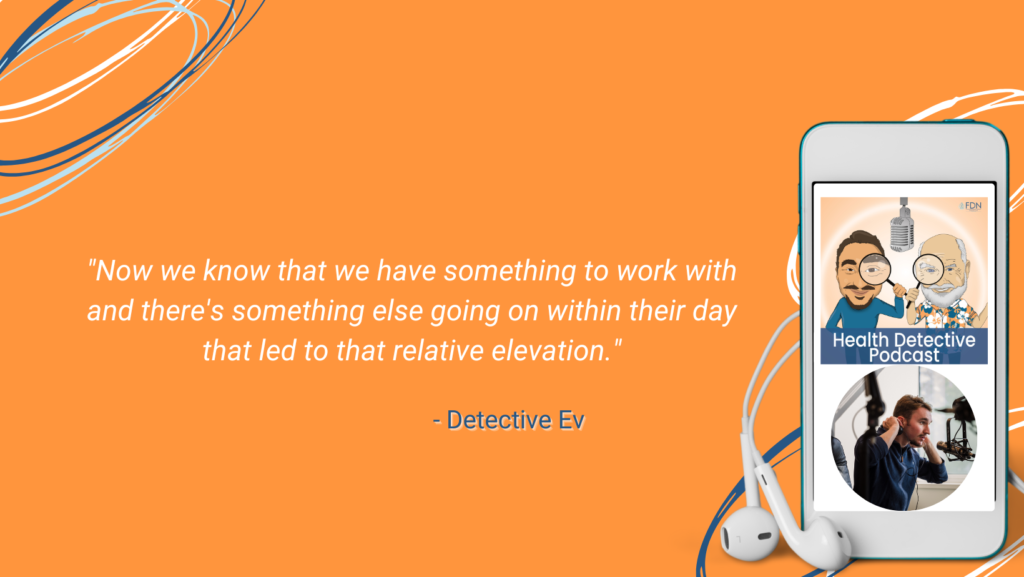
So, we teach you to rule that out with the client. Hey, by the way, did you like fight with someone that day? Did you get some bad news? Well, no, I didn’t. Okay, cool. Now we know that we have something to work with and there’s something else going on within their day that led to that relative elevation.
We need to look at four markers. It’s probably one of the coolest parts on the test to me. I love it. I never forgot the stuff that I learned at this part of the course, because you can figure out so many different things. Even more fascinating is, depending on the type of relative elevation, whether it was in the morning, noon, afternoon, or night, there could be different things that correlate with that. It’s really fascinating.
So, this is already at the length that I like these solo episodes to be at. I just like to bring an introductory thing. Let’s go in summary really quick and remember the markers that we’re looking at.
Stress and Hormone Panel – Summary
We’re looking at estradiol, progesterone, progesterone to estradiol ratios, melatonin, secretory IgA, DHEA, cortisol, cortisol to DHEA ratio, testosterone, and a couple of other things. We’re also doing four different samples throughout the day to see those patterns, to see what’s actually going on.
We don’t want to be tricked like Western medicine gets tricked sometimes. The morning stuff looked normal so there must not be a hormone issue, Mr. Transue. Well, the rest of the day didn’t look so good. It actually looked terrible. That’s why we need to do this. Then we can also figure out (this is mentioned in a different episode, I didn’t talk about it today), we can figure out what phase of HPA axis dysfunction this individual might be in.
We talked about HPT today, hypothalamic, pituitary, thyroid axis. HPA is hypothalamic, pituitary, adrenal axis. It’s getting less and less common cause they realized it’s outdated, but when people mention adrenal fatigue, what they’re really referring to is HPA axis dysfunction. There’s hardly anything such as adrenal fatigue. It’s not really that simple or straightforward. There’s an autoimmune disease that would maybe be considered an adrenal fatigue, but 99 times out of a hundred, what you’re looking at is HPA axis dysfunction.
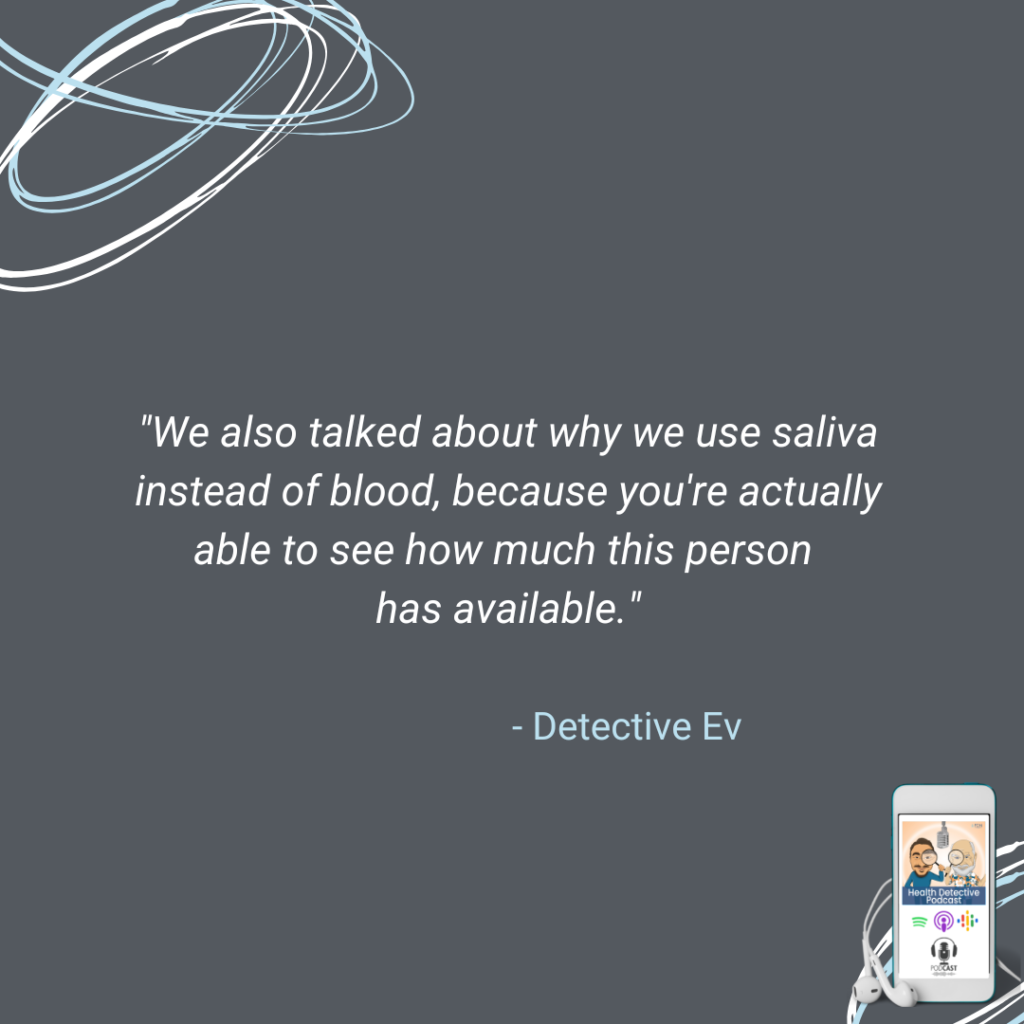
With these patterns, we’re also able to see where this person might be in the stages of HPA axis dysfunction, which is not a diagnosis by any means, but it’s an interesting thing to show your clients. We also talked about why we use saliva instead of blood, because you’re actually able to see how much this person has available.
Then lastly, not in any particular order here, we talked about why we use this test overall, not just the saliva part, but why is this test involved at all?
Conclusion
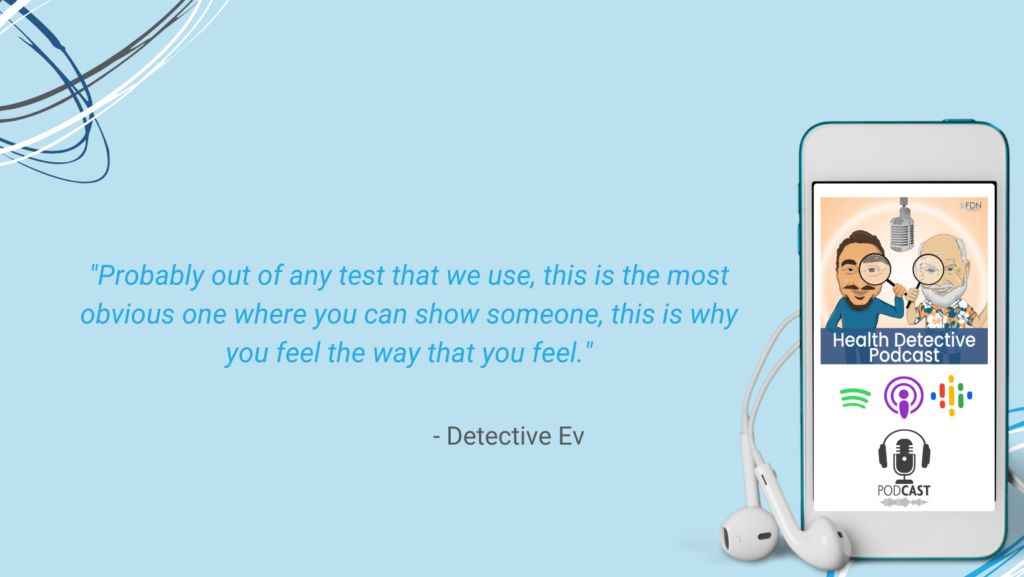
It’s because the hormonal markers are some of the most clinically correlatable things with our clients. Probably out of any test that we use, this is the most obvious one where you can show someone, this is why you feel the way that you feel. I can predict that pretty well, even without knowing their symptoms.
But certainly, once you know the symptoms, you can see it perfectly. I hope that makes sense. If you guys have any questions about this test itself, you know where to find me. Go to Podbean (it’s a podcast platform), and that’s where you can comment to us directly. Search for the Health Detective Podcast on Podbean.
Leave me a comment. Leave me a question. I will happily answer that question in the show, or I will have someone on who is able to answer that for you. We got three more tests to look at, two more labs, but three more tests. I’ll be back next time with the mucosal barrier assessment, AKA our leaky gut assessment.
I’m very excited for that one, cause it’s pretty rare that someone can even explain leaky gut well, let alone test for it. And FDNs are able to do both of those things. I hope you guys have a great week and I’m looking forward to talking to you guys again soon. Take care.

